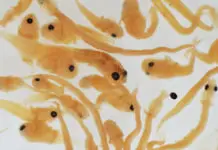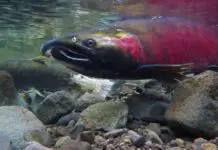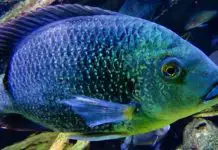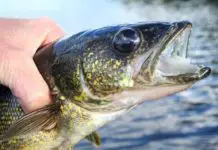
In nature, environmental pollutants usually exist in mixtures, and not individually. Recent research shows that the toxicity of the environmental pollutants non-dioxin-like PCB and dioxins are altered when they appear in mixtures rather than individually.
Novel substances and products are continuously being produced and new environmental pollutants are released in nature, adding to those that already exist. Animals and humans are commonly exposed to the combined effects of these pollutants through food, air and water, and in order to protect us against environmental pollutants in food they are subject to risk assessments.
Dioxins and dioxin-like PCBs are environmental pollutants which break down slowly in nature and may have detrimental effects. Over the last 20 years attempts to combat pollution have greatly reduced the level of these substances in food products (see related information at the Norwegian Institute of Publich Health, www.folkehelseinstituttet.no).
Dioxins exist in 210 different chemical forms, with different degrees of toxicity. For some of these substances the toxicity is measured using Toxic Equivalent Factors (TEFs). TEFs gives an indication of the relative toxicity of a dioxin-like environmental pollutants compared to the dioxin compound 2,3,7,8 -TCDD, which is known to be most toxic. When mixtures of several dioxin-like environmental toxins are assessed, the concentration of each substance is multiplied by its TEF- value and the sum of these values is used as a measure of how potentially toxic the mixture is, given as the toxic equivalent (TEQ).
– The toxicity of mixtures of environmental pollutants is known to differ from the toxicity of the individual substances. Little is known about why and how dioxins and non-dioxin-like PCBs affect each other’s toxicity. We wanted to investigate this further, says researcher Pål A. Olsvik at the National Institute of Nutrition and Seafood Research (NIFES).
– Our studies showed that two specific chemical forms of dioxin were less toxic together than they were individually, while non-dioxin-like PCB and dioxin were more toxic together than they were individually.
Environmental pollutants tested on liver cells from salmon
Fact box:
What is meant by gene expression?
All cells in the body have a cell nucleus which contains DNA. The DNA contains genetic sequences which define the structure of different proteins with different functions. For a protein to be created, the DNA must undergo a process whereby the genetic sequences are transcribed to mRNA, which is transported out of the cell nucleus. The term “gene expression” means the amount of mRNA in a cell or a tissue at a given time. When mRNA is transported from the cell nucleus the transcription unit is translated to a protein. When we say that a gene is up-regulated, more of a specific mRNA that codes for a protein is produced. More of this protein will be produced, such as an intake protein, a transport protein or an enzyme. This, in turn, can affect processes in the cell and otherwise in the body.
Environmental pollutants can accumulate in fish and other animals. The liver is the fish’s main detoxification organ and the gene expression in liver cells can indicate which cellular mechanisms are affected. Liver cells from Atlantic salmon were exposed to a medium containing either non-dioxin-like PCB (PCB 138), or the dioxins pentachlorodibenzo-p-dioxin(1,2,3,7,8-PeCDD) and tetrachlorodibenzofuran (2,3,7,8,-TCDF), singularly or in a mixture. The gene expression of eight different genes involved in detoxification processes were examined (see fact box for an explanation of “gene expression”).
– Expression of the genes CYP1A and UDPGT showed that PeCDD and TCDF were less toxic at high concentrations and cells were exposed to the two substances simultaneously. Conversely, the toxicity of PCB 138 and PeCDD was greater when cells were exposed simultaneously rather than singularly.
– PCB 138 has not been assigned a TEF-value since it is not a dioxin-like PCB. The study therefore shows that in some situations the TEQ may underestimate the toxicity of compounds when they are present in a mixture.
As the study was carried out on liver cells the results are not necessarily representative for the whole fish. Likewise, changes at the mRNA level do not necessarily reflect effects on proteins in the cells. Nevertheless, the results give some indication of which mechanisms are affected in the liver cells, and in this respect cells can be used as a tool to identify possible effects before conducting studies with live animals.
– Studies which examine several environmental pollutants simultaneously are demanding and complex and more research is needed in this field of research, says Olsvik.
































